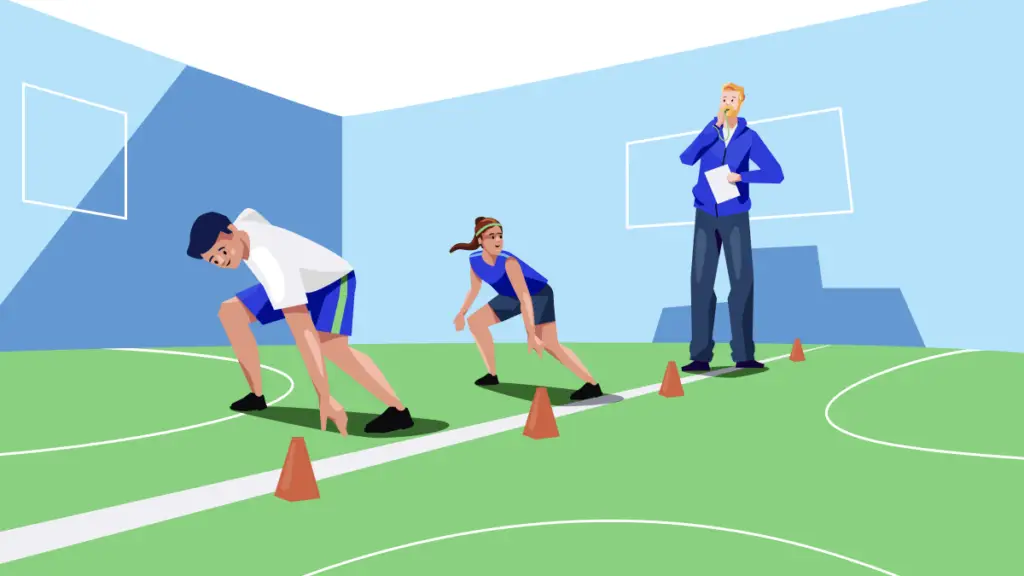
Evaluating and grouping athletes effectively is crucial for running a successful sports camp. Proper evaluation ensures that each athlete is placed in an environment where they can thrive, learn, and enjoy their camp experience. This guide will provide you with detailed steps and best practices to evaluate and group your camp athletes efficiently.
Evaluation is not just about assessing skills; it’s about creating a balanced and fair environment where all athletes can improve. Accurate evaluation ensures fair play by grouping athletes according to their skill levels, creating more competitive and enjoyable sessions. It also allows for tailored training sessions that can significantly enhance learning outcomes. Moreover, it helps identify potential early, providing opportunities for growth and development.
Begin with an initial assessment during the registration or check-in process. Collecting information about the athletes’ previous experience, skill levels, and personal goals helps form a preliminary idea of the skill distribution among your campers. This initial data is crucial for making informed decisions about how to group athletes effectively.
Conduct on-field evaluations on the first day of camp. Use drills and activities focused on the fundamentals of the sport to gauge each athlete’s abilities. Multiple coaches should observe and take notes to ensure a comprehensive evaluation. This step provides a real-time understanding of each athlete’s skills and potential.
Implement drill-based testing that covers different aspects of the sport. For example, in a soccer camp, include drills for dribbling, passing, shooting, and defensive skills. Ensuring that the drills are consistent and standardized provides a fair assessment for all athletes. This method offers a structured way to evaluate technical abilities.
Organize small-sided games to observe how athletes perform in real-game scenarios. This helps in understanding their game sense, teamwork, and ability to apply skills under pressure. Rotating athletes through different positions and groups provides a holistic view of their capabilities and helps identify natural leaders and team players.
Evaluation should be an ongoing process throughout the camp. Coaches should take notes during practice sessions and games, continually assessing athletes’ progress. Groups should be adjusted as needed based on performance and improvement. This dynamic approach ensures that athletes are always challenged appropriately.
Providing constructive feedback to athletes is essential. Let them know what they did well and where they can improve. Keeping open lines of communication with athletes and parents is also crucial. Clear explanations of why an athlete is placed in a particular group can help manage expectations and encourage continuous improvement.
Grouping athletes by skill level rather than age ensures that all athletes are challenged appropriately and can enjoy the game. This approach helps maintain a competitive balance and makes the training more effective.
Being flexible with group assignments is key. Allow for changes if an athlete shows significant improvement or struggles in their initial group. Regular reassessment and adjustment of groups maintain balanced competition and ensure that all athletes are placed where they can perform best.
When creating teams for drills or scrimmages, strive to make them as balanced as possible. This keeps the games competitive and enjoyable for all participants. Using the initial evaluations to distribute talent evenly across teams helps in achieving this balance.
Take into account the personal goals and motivations of each athlete. Some might be there to improve specific skills, while others might be looking for a fun and social experience. Tailoring your approach to meet these diverse needs ensures that each athlete gets the most out of their camp experience.
Using the right tools and resources can streamline the evaluation process. An athlete evaluation template ensures consistency across all coaches, while a detailed skill assessment checklist helps track progress. Encouraging coaches to keep detailed observation notes also aids in making informed decisions about group assignments and provides valuable feedback to athletes.
Evaluating and grouping athletes effectively is essential for creating a productive and enjoyable sports camp experience. By following these steps and best practices, you can ensure that each athlete is placed in the right environment to learn, grow, and have fun. Remember, the goal is to foster a positive and inclusive atmosphere where all athletes can succeed.
Make sure to use these tips to enhance the athlete evaluation and grouping process at your next sports camp. With proper planning and execution, you can create an outstanding camp experience that will keep athletes and parents coming back year after year.